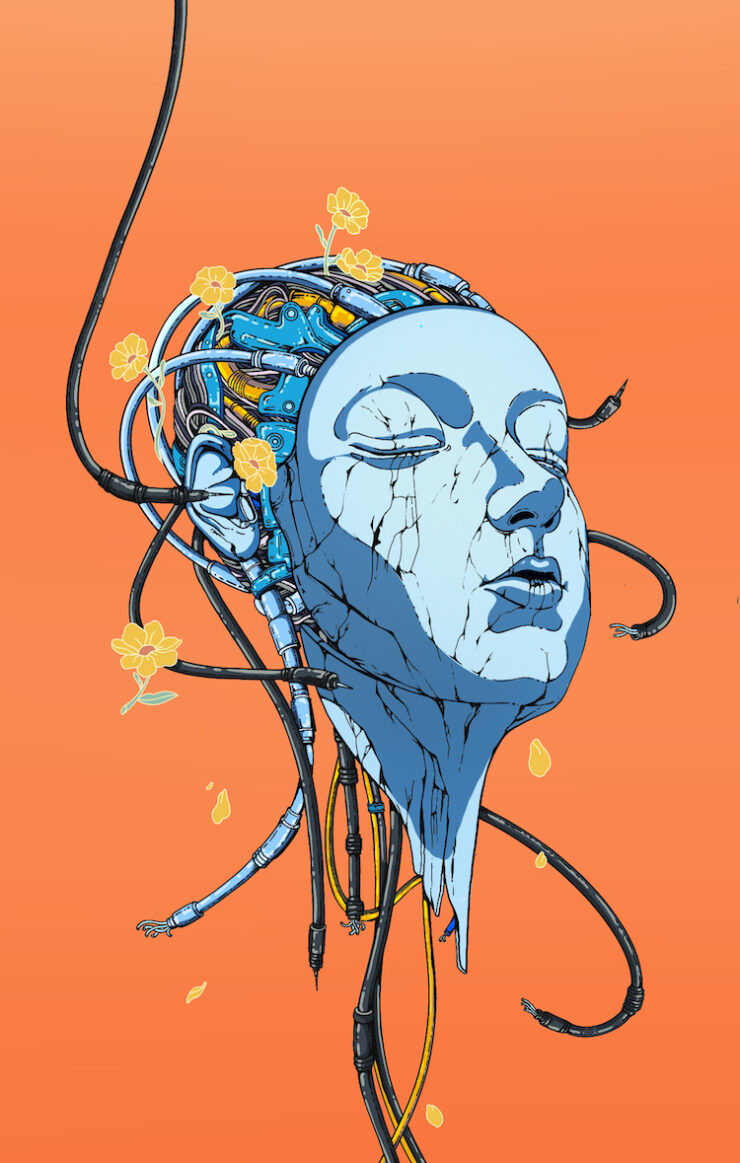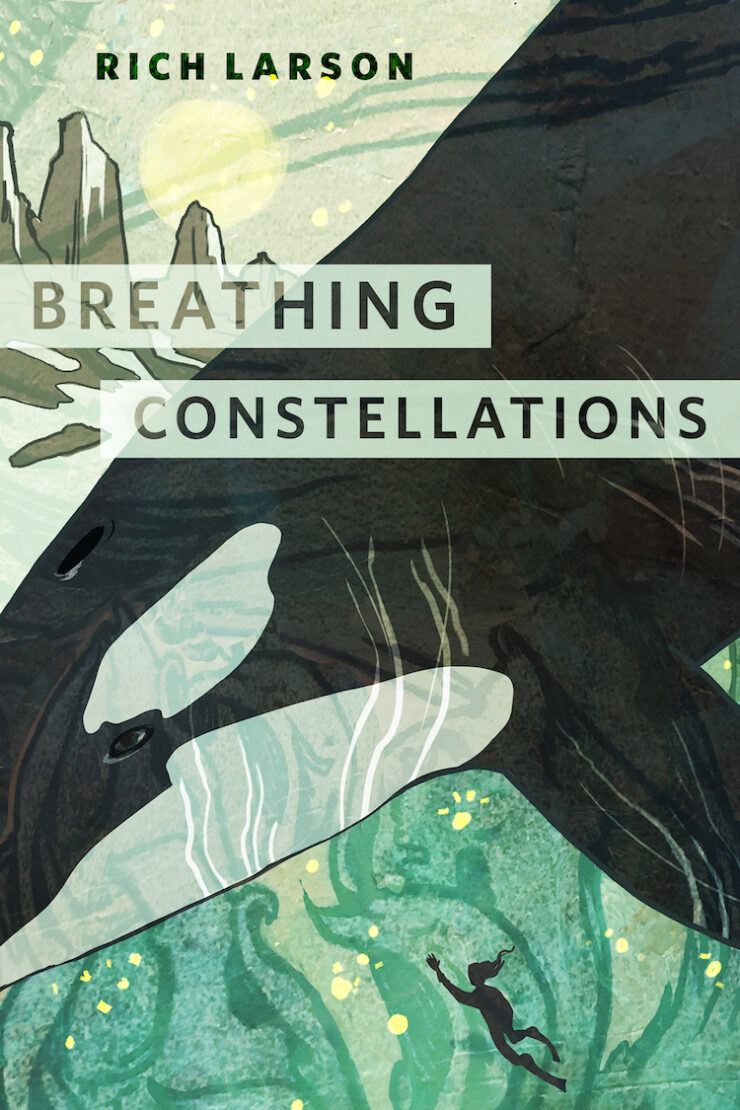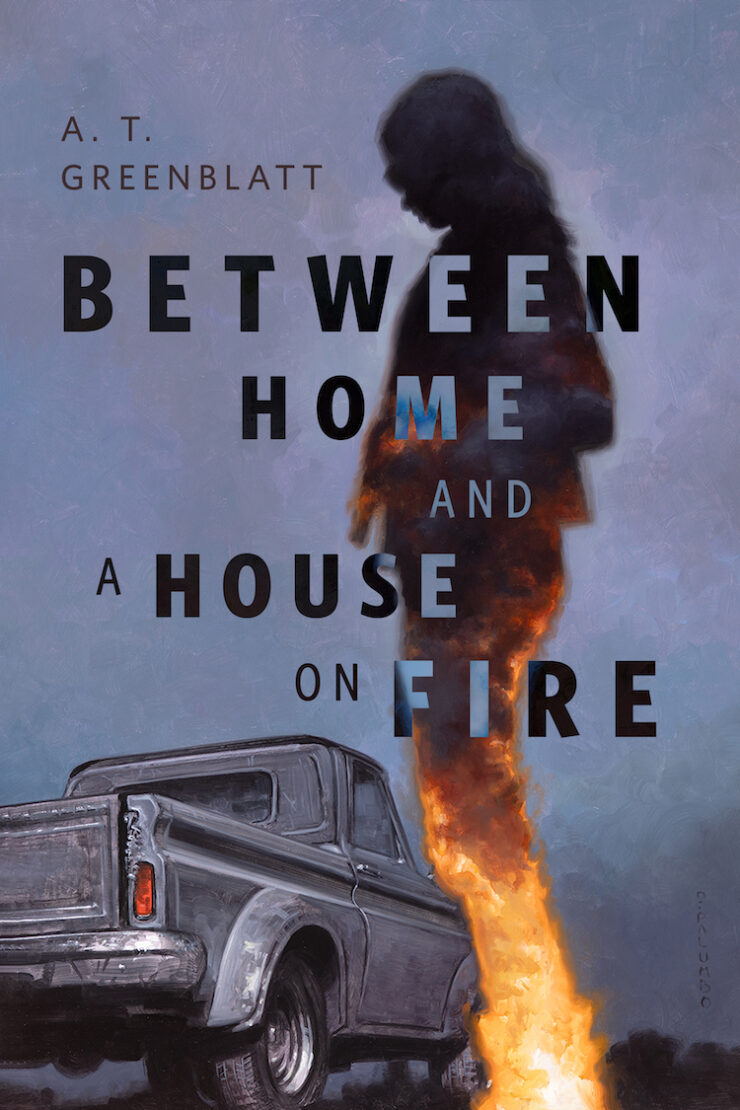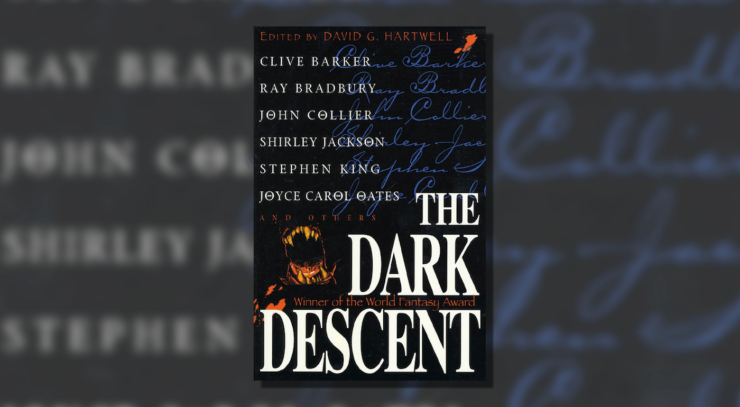Welcome back to Dissecting The Dark Descent, where we lovingly delve into the guts of David Hartwell’s seminal 1987 anthology story by story, and in the process, explore the underpinnings of a genre we all love. For a more in-depth introduction, here’s the intro post.
Michael Bishop was one of the most versatile writers in fantastic fiction. While nominally he worked in science fiction and fantasy, his works were complex social and psychological portraits of characters often caught within bizarre circumstances. He took premises that would sound standard in anyone else’s hands (“Pretentious art critic becomes comic book superhero” and “Frankenstein’s Monster joins a baseball team” being two of my favorites of his) and turned them into unusual and touching character studies. “Within the Walls of Tyre” is Bishop applying his studied hand to a number of complex subjects—the poison of nostalgia, processing trauma, and how one chooses to live in a society of all-encompassing artifice—and merges them into a tense and disturbing work of psychological suspense about what happens when someone decides to tear down the walls we build for ourselves, and the monstrousness that comes with that act. (For anyone who hasn’t read the story, consider this a content warning for pregnancy loss/medical issues treated in a disturbing way.)
On a tense day during the holiday season, Marilyn Odau is managing her department store when she receives an unexpected visitor in the form of a novelty salesman named Nicholas Anson. Anson’s a charming enough man selling a gaudy version of painted-on stockings to the department store and Marilyn quickly rebuffs him—but is stopped in her tracks when she sees that he resembles a long-lost lover who died during the war. This shocking resemblance pulls the two of them onto a dark path, one that will reveal the harrowing secrets of Jordan Burk, the man whose path they both shared, and the horrifying petrified fetus Marilyn keeps in a bassinet in her townhouse.
The world of “Within the Walls of Tyre” is governed by artifice. In the opening moments of the story, Marilyn muses on how she’s not actually controlling her car so much as keeping it steady on the roads. This continues throughout the story, whether it’s the way the Summerstone mall (one of several artificially pastoral names Bishop drops throughout the story) makes it impossible to tell the time of day, the various holiday decorations on display, or the speech Anson gives to Marilyn loaded with weaponized nostalgia for the 1940s and 1960s meant to sell his bottled stockings. While Marilyn prides herself on being smart enough to see through the illusions, she’s even taken in herself—she drives a half-hour to work through tense traffic solely because she thinks that her housing development with a cheery name is “less gaudy,” and she’s blinded by her own nostalgia for her past, digressing about how dignified and beautiful the department store she used to work at (a place she drives by every day) is, compared to the place she works now.
Marilyn’s view of the past and her dependence on those illusions are a comfort and bastion to her. She seems a little superior when she brings up the past, whether it’s the way that she can’t shake her habit of saving for her (now dead) impoverished parents, her rejection of Anson’s weaponized nostalgia during the sales pitch for his “Liquid Sheers” bottled stockings, or imagining herself as the protagonist in a doomed romance with Jordan Burk, her long-lost love who died during the war. She’s cast herself in a narrative where everything she’s experienced is simply another event in the story, because it’s the way she derives meaning and weight in a world where everything is crafted from artifice and nostalgia. The narrative (as most narratives are) isn’t real, but it creates the illusion of order and allows her own recollections of the past to matter, as opposed to recognizing them as empty nostalgia of bygone days.
All of which makes Nicholas Anson the perfect foil for her. Anson is cut from the cloth of a gothic-fiction staple, that of the “demon lover,” a charmingly handsome (and possibly supernatural) man who knows more than he lets on about the protagonist’s past and uses it to torment and bedevil them even as he seduces them. He plays that role in Marilyn’s narrative well enough—his past is a mishmash of 1960s cliches, he’s selling a product that weaponizes nostalgia specifically for the past era that Marilyn views as central to her own narrative, and when Marilyn mentally picks at Anson’s story, the details don’t completely make sense.
If Marilyn uses the past and her own carefully assembled narrative as a defense mechanism for her trauma and adversity, Anson uses the past as a mechanism to attack. This is most clearly seen in his introductory scene hawking paint-on stockings inspired by the 1940s and the body-painting trends of the 1960s, but is at its most damaging in his final strike against Marilyn, filling a storefront window with a display advertising “Stone Children for Christmas” based on her own petrified ectopic pregnancy and inviting her to come take a look. Anson then smiles and vanishes into the crowd as she smashes the window and breaks down in front of bewildered shoppers. In a further twist of Bishop’s knife, all the women in the crowd are wearing Anson’s tacky painted-on stockings during Marilyn’s breakdown.
While Anson is the villain of the piece, weaponizing Marilyn’s trauma against her in a wholly unwarranted way, it’s interesting he doesn’t do this at first. When he finds (it’s ambiguous whether he stumbled upon the petrified fetus in Marilyn’s bedroom or “stumbled upon” it) the result of Marilyn’s ectopic pregnancy, his first response is to reassure her while telling her about the real Jordan Burk, the one who used her and abused his family while claiming her as an excuse. He listens sympathetically as Marilyn tells her story about her medical trauma and the subsequent coma. Anson even says flat out he isn’t interested in revenge, though the fact that he seduced a woman solely out of self-interest and curiosity certainly speaks negatively about his character. Things only turn dark when he chooses to bludgeon Marilyn with the knowledge that her lost love was a horror to those around him. The horror in his actions doesn’t simply lie in the fact that he’s manipulative and every bit the equal of the men in Marilyn’s life who forced her down this path, but that Anson believes he’s justified in forcing her to confront the harsh reality behind her fantasy. His attempt to “free” her only extends the chain of harm and self-interest.
Ultimately, that’s the point that matters. “Within the Walls of Tyre” is a portrait of two deeply damaged people set on a collision course by one long dead and toxic individual. Both cling to their own illusions, but Marilyn’s are used to comfort and mitigate her trauma, while Anson’s are used solely to attack others and generate profit. There’s no “tough love” in what he does, just brutal malice and rage against a person who isn’t even alive to feel the pain. While the world around them is an artificial and bleak one tinged by an unhealthy nostalgia, stripping that away does more harm to Marilyn than any good. Anson might have tried to do something noble by destroying Marilyn’s illusions, but ultimately, he thrives in that world of bleak artifice and nostalgia, and (despite both being damaged) is a much worse person for it. In the end (as so many in these stories do), he embraces that monstrousness in his final act.
And now to turn it over to you. What do you think of this story: Would it have been better to leave Marilyn to process things (or not) through her illusions, or shatter them in the hopes that she’ll recover better and stronger? What is your favorite Michael Bishop story or memory?
And please join us next time for more gothic character studies with J.S. Le Fanu’s “Schalken the Painter”










